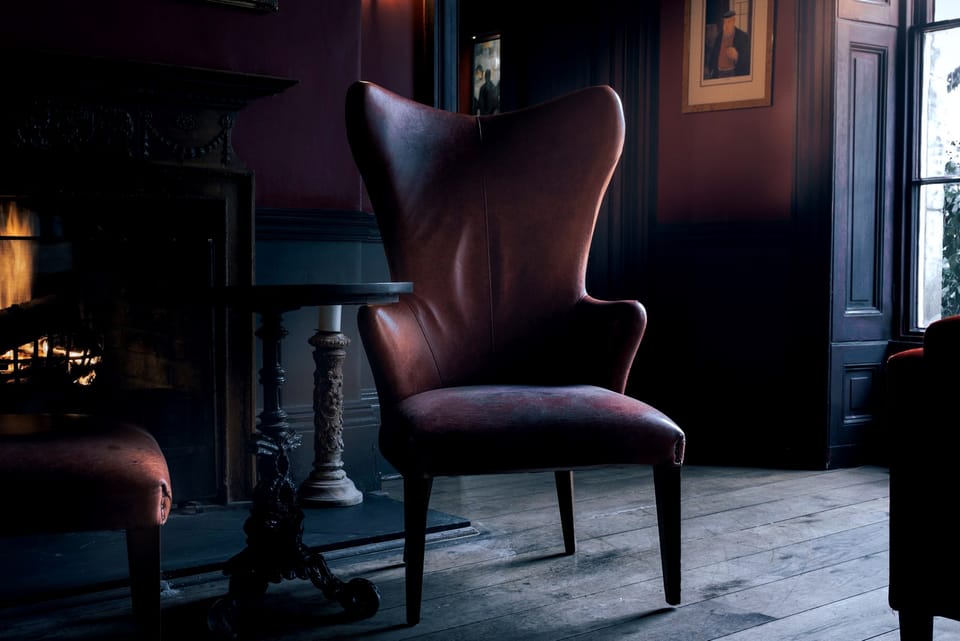Dumb History of Chairs

“You did it when you were in school. You did it when you were watching TV. You did it when you were on the bus. You did it in your workplace and it's pretty much all that you do when you’re in the air”
“What are you trying to say”
“Is it possible for you to be objective about this topic? You’ve been sitting all your life”
I don’t believe I can, nobody can. We spend more than fifty percent of our waking time sitting. That’s almost as much as the time we spend with man’s best friend: mobile phone. To keep this article objective, I’ll be writing this article at my standing desk while it’s standing with me.
They say one learns to sit before one learns to walk. Yet, there were entire generations of people who never got to sit in a chair. But man had to do what man had to do. Women too. So they just sat on the floor, on a fallen log, just about wherever they could sit on, or on top of each other when they were in the mood for it.
Chairs are one of the oldest inventions, they are older than Joe Biden. One of the earliest chairs to be invented was folding chairs. They were invented in China by people who walked a fair bit because you’d want to sit down for a bit after you’ve walked a bit.
If you take a left and drive west, you will find the earliest records of chairs in Egyptian tombs. Unfortunately, you cannot sit on any of them because they’re mostly paintings of people sitting on chairs. If you ask me, don’t even bother taking that left, just look them up on the internet like the rest of us. And when you do and you observe them closely, you’ll notice that most of these Egyptian chairs were quite democratic. And when you zoom out and observe the same thing from afar, you’ll notice the same exact thing: they’re democratic. I know it’s tedious but becoming an armchair expert of chairs like me was never easy. Women, gods, and musicians can all be seen sitting on chairs in various paintings, deeply bored, wondering how many more hours they need to sit still like that, and praying that the artist is getting their features all right. Because when you are a God, that’s all you can do. But, like all good things in life, the democracy of chairs had to come to an end, albeit temporarily.
In the medieval period, chairs were reserved for nobility and clergy. Elite had to “sit above” all others. Others could sit on benches like schoolchildren if you could afford to splurge on one. Otherwise, they’d just sit on the floor if they were allowed to sit at all. This section in the history of chairs was all about power and status. Even today, If you ever tried to sit on any of those chairs, you can be sure to be kicked out of the museum. They were more than a piece of furniture, they’re strong political statements.
The Greeks made klismos, beautiful chairs with curvy legs because curiosity wasn’t a crime back then. They provided a wider base and more stability. Thrones that were all the rage during that time. People would kill each other to get hold of one. Sometimes they had to kill more people than John Wick did in John Wick 3 & 4. Still, it guaranteed nothing. Ask John show. So much for sitting on an overpriced chair with an overweight hat. The throne was like any other chair- it had four legs, two arms, and no brain whatsoever. It cannot even choose who gets to sit on it. So, even in Hogwarts where literally anything could happen, they couldn’t trust that job to the chair and gave it to a talking hat instead. In the real world, one would have to go through rigorous nepotistic tests to determine if eligible for sitting on it. It would’ve greatly helped one’s odds if the one was not a woman.
With time, the thrones grew taller and were built like fortresses, embellished with the rarest jewels. After a point, you can’t even sit on them, you can only ascend them.
Renaissance was a golden age for jobs that required “sitting on it”. Philosophers and poets would lean heavily onto their chairs for deep thoughts. For the well-to-do, Chairs became a symbol of individualism. Chairs reflected their personality. Such losers!
There were losers and then there were those who had nothing to lose: Peasants and other poor people. During the French Revolution, these common folk ransacked the royal palaces, threw royal chairs out of the windows, went back to the streets, and lit a royal fire for the world to see. Monarchy was abolished and the new government switched to plain unglamorous chairs that all looked exactly the same; paving the way to modern Ikea designs.
Industrial Revolution followed and it was a period of great democratization. It made chairs affordable, accessible, and wildly uncomfortable. They weren’t called butt traps for no reason. The future is here, the world sat down and took notice. We needed chairs everywhere and for every job. Just like all good things in the world, Patriarchy had to be ingrained into them. Managerial chairs were designed for male bodies and secretarial chairs for females. While the executive chairs were more generous in space, the secretarial chairs were small, slender and curvaceous to go with an hourglass structure.
It is only fitting that Charles Darwin had to invent the modern office chairs. It was only natural evolution that chairs would yearn to grow some wheels. So, Darwin attached some wheels from his sick bed to his chair which enabled him to work on his experiments from home. Thus the ergonomic office chair was born which later led to growth of office jobs, and then to thousands of circling back emails that only meant to find you well.
Still, chairs are here to stay, nearly all 14 billion of them. AI can take our jobs but not our chairs. We have created enough chairs for every human to sit on and a few others for them to stand on to change the light bulb.
Now you don’t just sit on it, subscribe to this blog if you love what you’re reading.




Comments ()